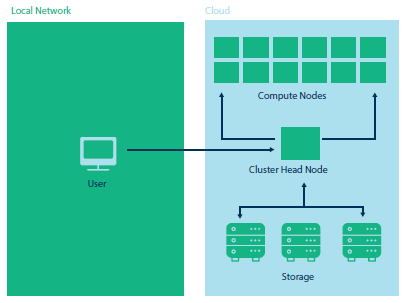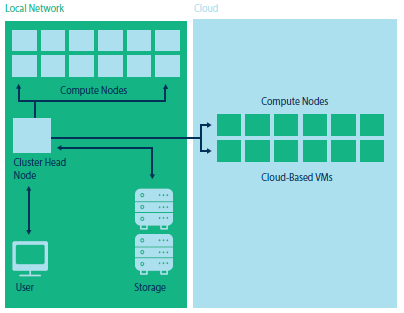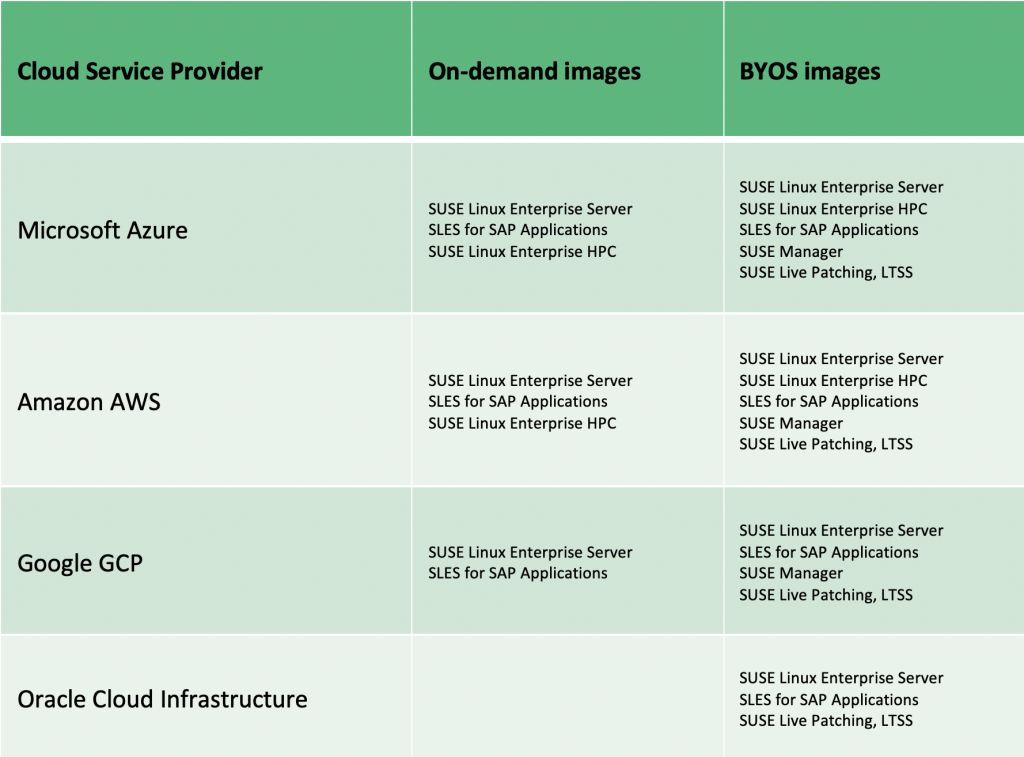Adapting for Hybrid Cloud – Part 2 of 3: The SUSE Solution
Part 1 of this series – Adapting for Hybrid Cloud: The Market – provides a view of the market challenges in achieving a cloud-optimized enterprise and adapting to hybrid cloud.
Your enterprise needs a choice of where to run its solutions – from the data center to different clouds. You need portability and scalability, coupled with robust tools, to operate converged container and virtual infrastructure across cloud environments. Our offerings enable you to run solutions where you want them, from your data center to different clouds and implementation methods, with portability and scale.

SUSE delivers capabilities for you to combine multiple cloud platforms, including converged container and virtual infrastructure, into a single entity; one that consolidates access to resources and is controlled in a single management environment. The outcome: you gain all the benefits of cloud solutions while maintaining total control and consistency of execution.
SUSE offerings related to hybrid cloud include:
- SUSE Manager
SUSE Manager combines software content lifecycle management with a centrally staged repository, configuration management, automation and state of the art monitoring capabilities for all major Linux distributions. With SUSE Manager you can significantly simplify your patch and configuration management stacks across all Linux distributions and deployment modes (physical, virtual and public cloud). - SUSE Linux Enterprise Server with SUSE Linux Enterprise Live Patching
No other Linux distribution makes it easier to migrate your existing workloads or stand up new workloads in the cloud. The loss of a mission-critical application or service due to downtime is just as expensive to your business whether your applications are running in the cloud or in your data center. Choosing SUSE Linux Enterprise in the public cloud ensures that you stay up to date with the latest security patches, feature enhancements and bug fixes. - SUSE Linux Enterprise High Performance Computing
Get on-demand compute resources that enable you to extend your on-premises HPC cluster to Amazon Web Services and Microsoft Azure when you need more capacity. - SUSE Linux Enterprise High Availability
Easy to set up and use, SUSE Linux Enterprise High Availability Extension eliminates your anxiety over data loss with real-time synchronization that quickly restores clustered services and intelligent locking mechanisms that maintain data integrity, helping you maintain continuity, protect data integrity and maximize uptime. And built-in business continuity eliminates single points of failure to protect business operations. - SUSE Linux Enterprise Server for SAP Applications
Run SAP solutions in the cloud on SUSE Linux Enterprise for SAP Applications with the leading platform for SAP solutions including SAP HANA. It provides a reliable, manageable and highly available platform for all SAP mission-critical workloads. Jointly validated and certified by SAP and SUSE, SUSE Linux Enterprise Server for SAP Applications consistently delivers outstanding uptime and performance—even under full CPU loads and high memory stress. - SUSE Enterprise Storage
Ceph-based, software-defined storage that simplifies deployment, configuration and management of enterprise storage. It enables enterprises to optimize IT spending by simplifying data management and providing instant and limitless scalability according to business needs.
Types of workloads and use cases
Essentially there are two types of workloads that could be migrated to the cloud in a cloud-optimized enterprise – data-intensive and compute-intensive. Each has their own characteristics and needs.
Let’s start with the data-intensive workload example. These programs rely on massive amounts of data that is analyzed to come up with fast results. The data could be coming from sensors at the edge or databases on-premise or data collected in the cloud. But, consider that data movement is relatively slow – so if you are hoping to get ultra-fast results then you need to limit the amount of data movement required. That’s where the cloud comes in. Most of the data in retail, government, healthcare and more is collected from the cloud – so it makes sense to establish an environment in the cloud that can process the data as soon as it’s collected for the ultra-fast real-time results that are needed. Here is a diagram of an “all-in-cloud” environment:

As a general rule of thumb, it is more cost-effective to establish an environment in the cloud if your workloads meet the following criteria:
- Not node-to-node communications-intensive
- Not I/O-intensive
- Not bound to on-premises data movement
- Uses shared data across many concurrent jobs
Now, let’s consider the compute-intensive workload. There are likely multiple workloads like this running on-premise. But as they start using up more and more compute capacity they start slowing down – and the cloud gives you a way to push that expanding workload to an environment that gives you greater scalability and more dedicated resources to run those programs. Leveraging the cloud on-demand is known as bursting. Here is a diagram of the cloud bursting scenario:

As a general rule of thumb, it is more cost-effective to establish an environment in the cloud if your workloads meet the following criteria:
- Bound to on-premise data movement
- Node-to-node communications-intensive
- I/O-intensive
- Does not need to share data across many concurrent jobs
SUSE for Public Cloud
There are two types of scenarios for using cloud images:
- On-demand (pay-as-you-go)
These images are used to start your instances and are paid on a consumption basis to the Cloud Service Provider (CSP). They are supported by the CSP and work well for “burst” workloads that scale in and out continuously. These workloads have well-defined off-hours of non-use. - Bring your own subscription (BYOS)
These images are used to start your instance and become part of your SUSE subscription use – supported directly by SUSE (level 1-3). Workloads are typically long running and/or 24/7 and are both well-understood and controlled.

In Summary
A true hybrid cloud environment combines two or more cloud platforms (usually public and private) into a single entity where access to resources is consolidated and controlled through a single management environment. This allows data and applications to be shared between them – essentially simplifying the interoperability and management. For public cloud, we deliver images for SLES, SUSE Manager, High Performance Computing, Live Patching, SAP, Cloud Application Platform, and more. That way, when companies migrate workloads between clouds or from on-premise to multi-cloud environments, the SUSE tools and platforms are consistent across the configurations.
During these uncertain and unprecedented times IT staff volatility has highlighted that when serious IT staff disruption occurs, home grown tools, disparate management products, remote management issues, lack of automation, and inconsistent monitoring and health checks leave IT seriously compromised. A fully leveraged SUSE Manager solution addresses ALL of the above and much more keeping your servers, VMs, containers and clusters secure, healthy, compliant and low maintenance irrespective of where they are deployed – private, public or hybrid cloud.
Thanks for reading!
Learn more about SUSE for hybrid cloud:
- https://www.suse.com/solutions/cloud/
- https://www.suse.com/products/cloud-application-platform/
- https://www.suse.com/programs/cloud/public/
- SUSE on Azure
- SUSE on AWS
Related Articles
Feb 15th, 2023
Stop the Churn with SUSE eLearning
Jul 08th, 2023
No comments yet